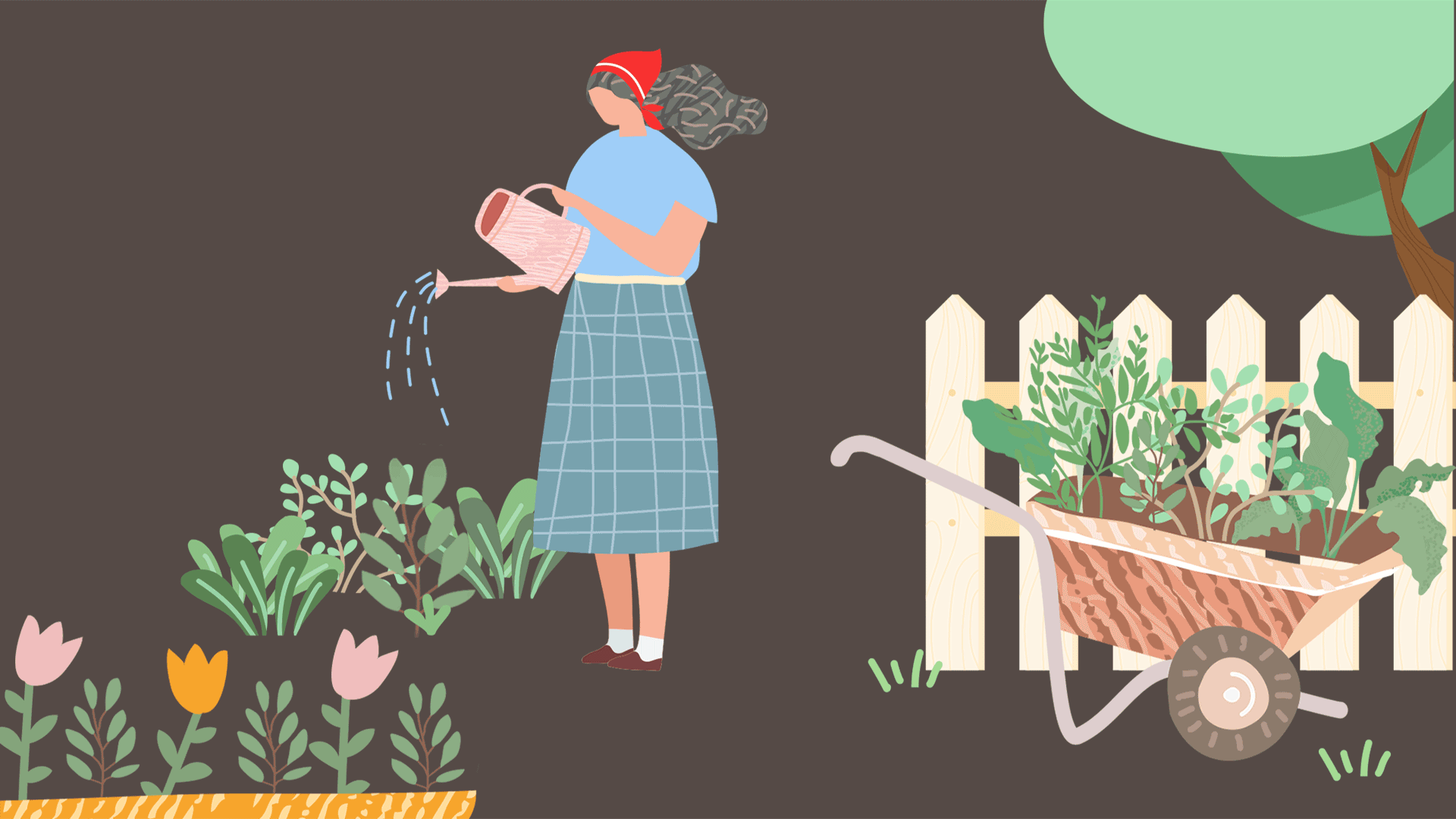- April 02, 2024
- By Sala Levin ’10
Why are redbud trees called that if their flowers are purple? Why are cherries the official fruit of D.C. if its famed trees don’t produce fruit? And why did Mother Nature invent the scourge of sweet gum trees, with their prickly balls that require raking up every bleeping spring?
Kneeling over our flower and vegetable beds to clean, prune and plant this time of year gives lots of time to ponder the mysteries of gardening, and maybe to pray for better results than last year’s.
Unsurprisingly, the University of Maryland Extension’s Home and Garden Information Center receives a surge of questions via its “Ask Extension” online services this time of year.
Christa Carignan, coordinator of digital horticulture education for the information center, urges those of us who attend to our gardens and landscapes to enjoy it.
“Gardening is not just a bunch of chores—it’s also a lot of fun to learn and it’s accessible to people at different ages and abilities,” she said.
Here, Carignan offers tips on how to make the most of your spring garden.
Maybe don’t clean up that much.
Your inner neat freak (or possibly your overly invested neighbor) might be urging you to rake all those dead leaves. But “there’s a benefit to delaying spring cleanup in our gardens to help support pollinators,” said Carignan. Native bees live in the ground and in decomposing stems and leaves, and butterflies overwinter in leaf material. Plus, all that plant matter adds valuable nutrients back into the soil.
[Stop Raking Leaves This Spring and Keep the Carbon in Your Soil]
If you can’t help yourself from tidying up your front yard, consider gathering your plant detritus and scattering it in some hidden corner of your backyard, said Carignan. “It’s really important, with loss of biodiversity, that our gardens can provide some habitat for some of the wildlife.”
Mulch like a pro.
Mulch is an important tool in your gardening arsenal: It can suppress weeds, help soil retain moisture and regulate ground temperature. But don’t go overboard. “Two to four inches is typically sufficient,” said Carignan. A too-deep layer of mulch around a tree can stifle the roots in their search for oxygen, causing them to reach up and circle around the base of the tree in a phenomenon called “girdling roots.” This can cut off the tree’s vascular system and lead to tree decline.
Make sure you give the trunk about 6 inches of space to breathe. “Sometimes you’ll see mulch volcanoes, with too much around the base of the tree,” said Carignan. Mulch that’s flush up against a trunk will keep the trunk too damp, potentially leading to disease and pest issues.
Keep daffodil stems until the green is gone.
Now that daffodil season is on its way out, those sunny yellow blooms may have faded to an unsightly, crinkly brown. You can clip those off, but don’t cut back the greenery until it turns yellow or brown. “While the foliage is still green, the plants are conducting photosynthesis,” said Carignan. “They’re generating energy for the bulb that’s going to produce next year’s flower.”
Plant trees—and something you can eat.
“Now’s a really great time to plant trees,” said Carignan. As part of the state’s 5 Million Trees initiative, which aims to plant 5 million trees across Maryland to combat climate change, many Maryland residents are eligible for rebates for native trees.
Try your hand at something edible, too. Berries, carrots, greens and a variety of herbs all do well in Maryland’s climate. People without big backyards can still get in on fruit and vegetable gardening, said Carignan. “You can use a five-gallon bucket and construct a simple container garden.”
Know what kind of hydrangea you have before you prune it.
To manage your hydrangeas, double-check what kind is growing in your garden before picking up the shears. If you have panicle hydrangeas—the kind with pyramid-like white flowers—you’re in the clear for pruning. These hydrangeas depend on the current season’s growth for their bloom, so you can cut away anything from last year. But bigleaf hydrangea—with its classic mophead flowers—relies on last season’s growth for their showstopping colors. “Prune them now, and you’re going to be cutting off your flower buds,” said Carignan.
Most spring-flowering shrubs, like forsythia, azaleas, lilacs or rhododendrons, should be pruned after they’re done showing off for the season. The main exception: rosebushes. They can be pruned now. “Roses tend to be prone to a number of diseases and pest problems, so rose pruning is good,” said Carignan.
Survey your property for standing water.
There’s no way around it: Mosquitoes are coming. Your best defense for keeping the biters at bay is avoiding the standing water where they breed. Check the bases of your flowerpots, tilt your bird bath to remove any rainwater and cover your downspouts, urged Carignan.
While you’re out there, get to know all the beneficial insects that are crawling around your yard. “Most of the insects that people will encounter in their gardens have a good purpose—a few are garden pests,” said Carignan. If you need help identifying the littlest critters (and knowing whether they’re friend or foe), send a picture to the University of Maryland Extension.
Find a full list of April gardening tips and tasks on the UME’s Home and Garden Information Center’s website.
